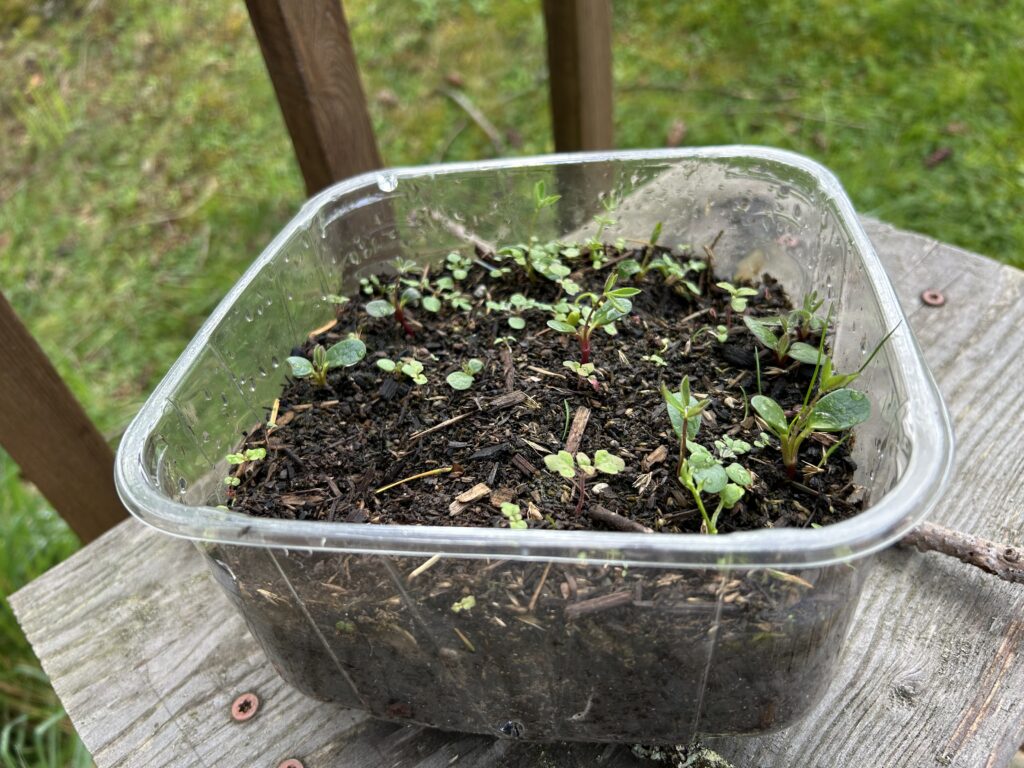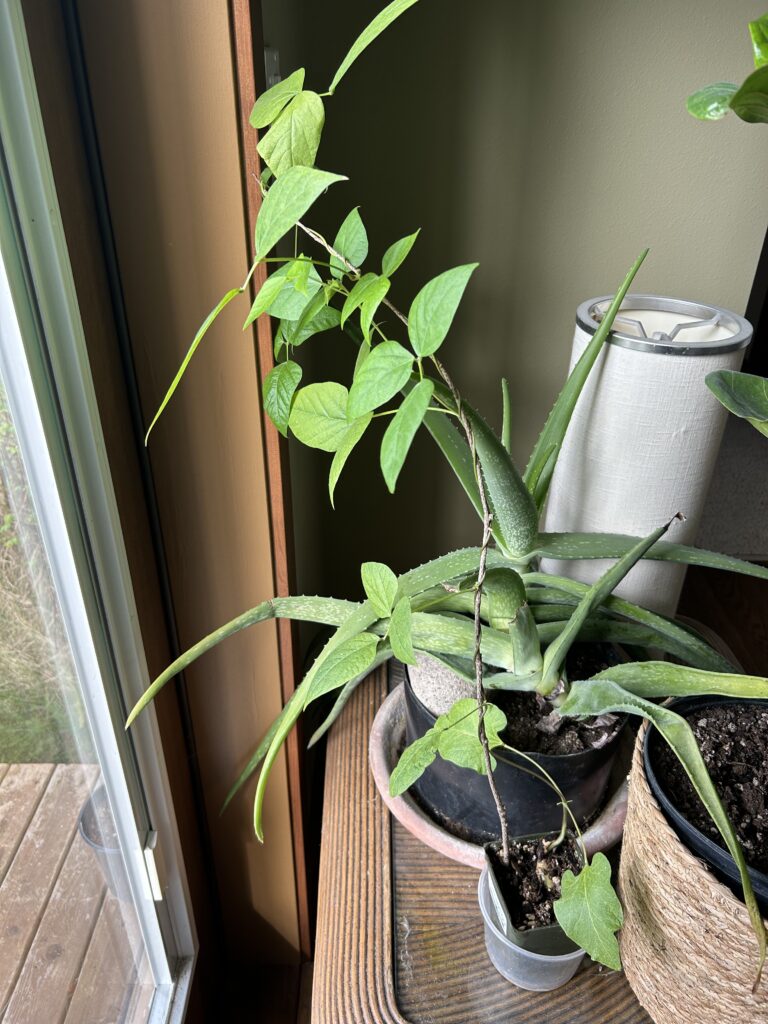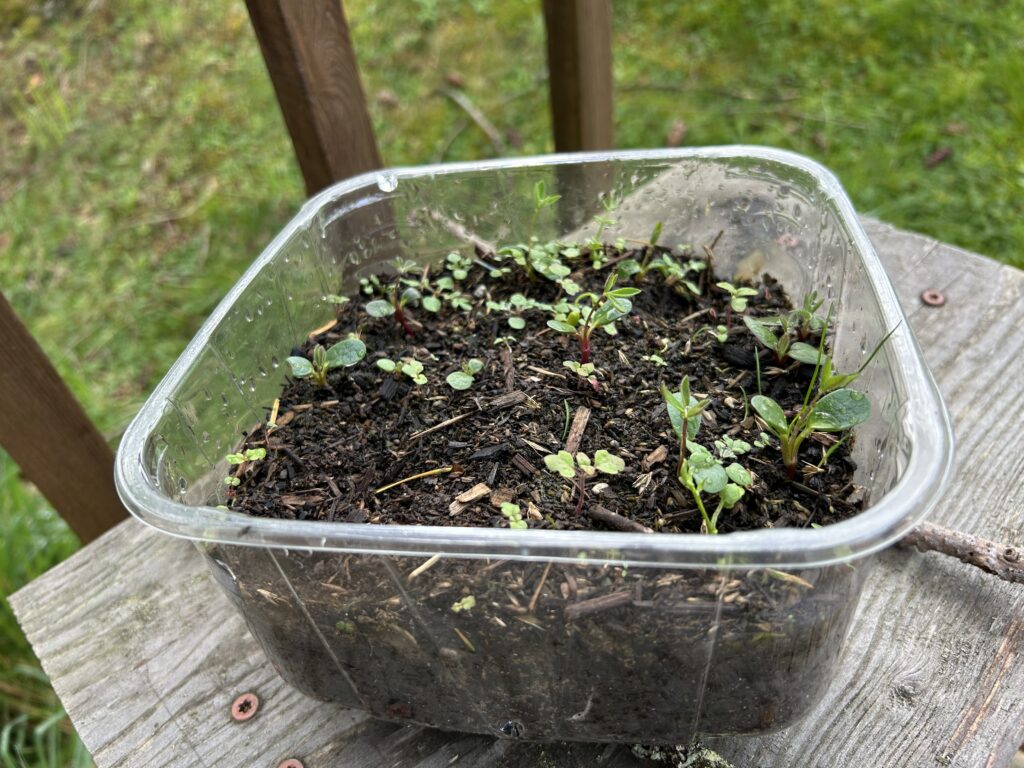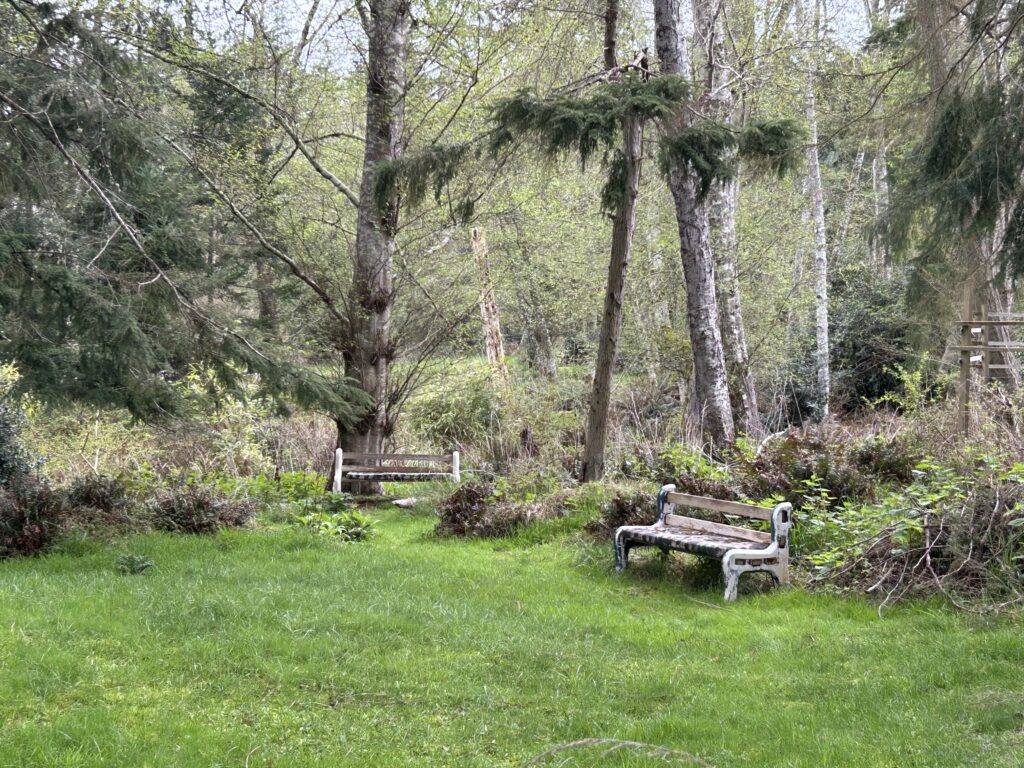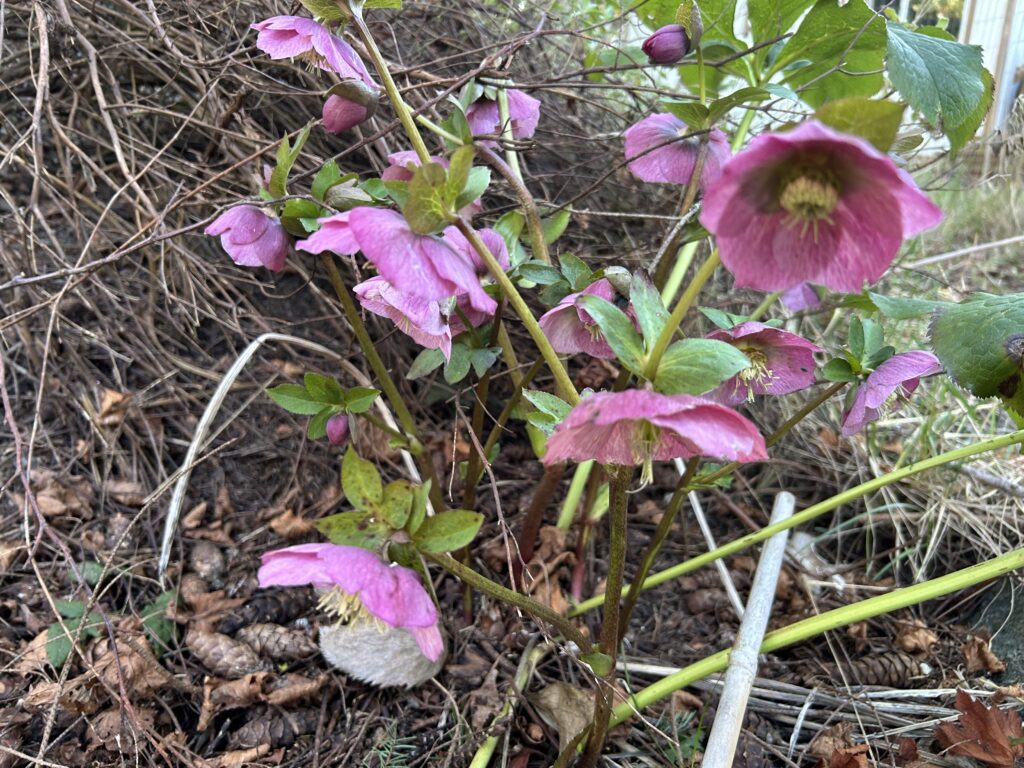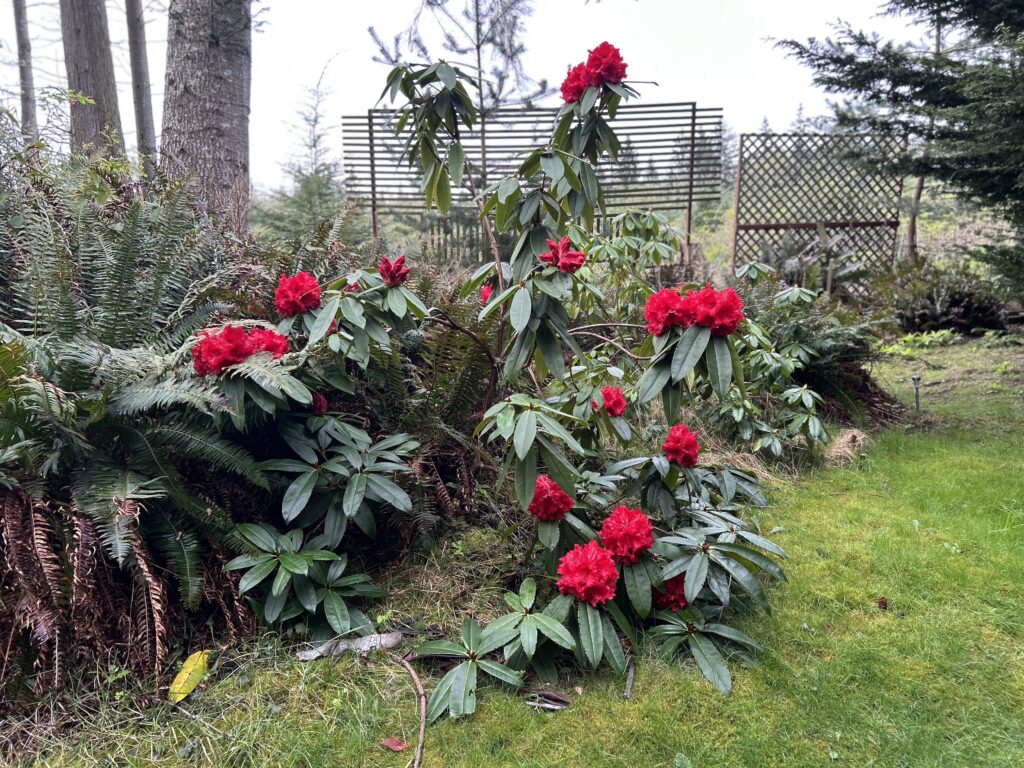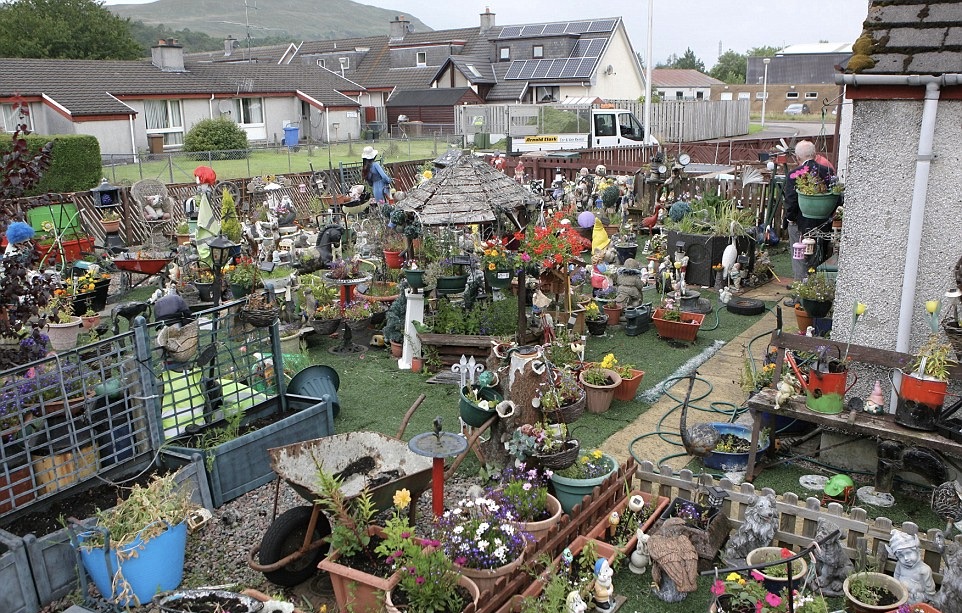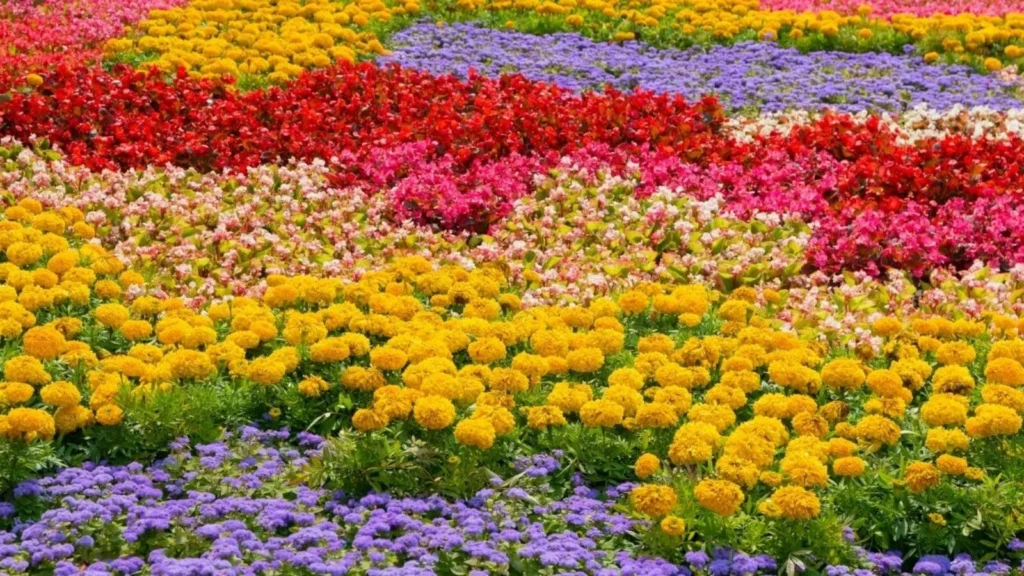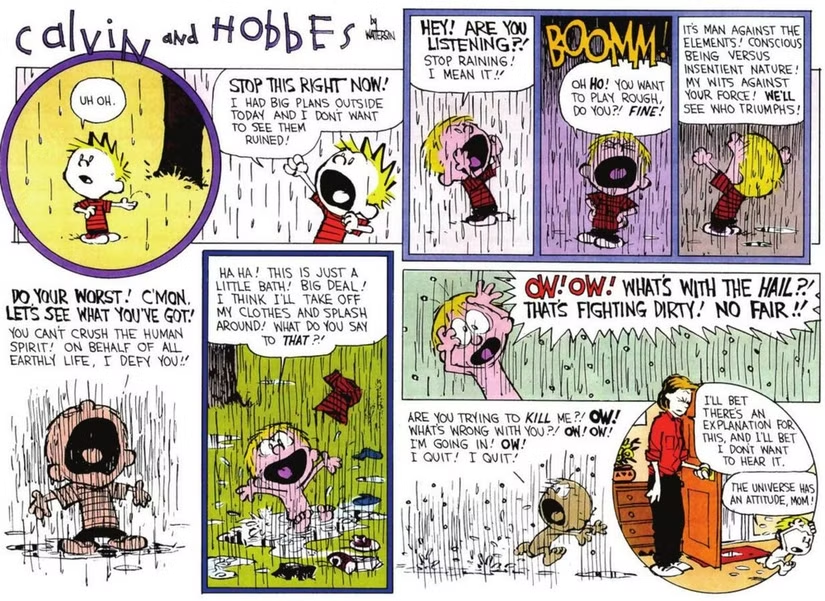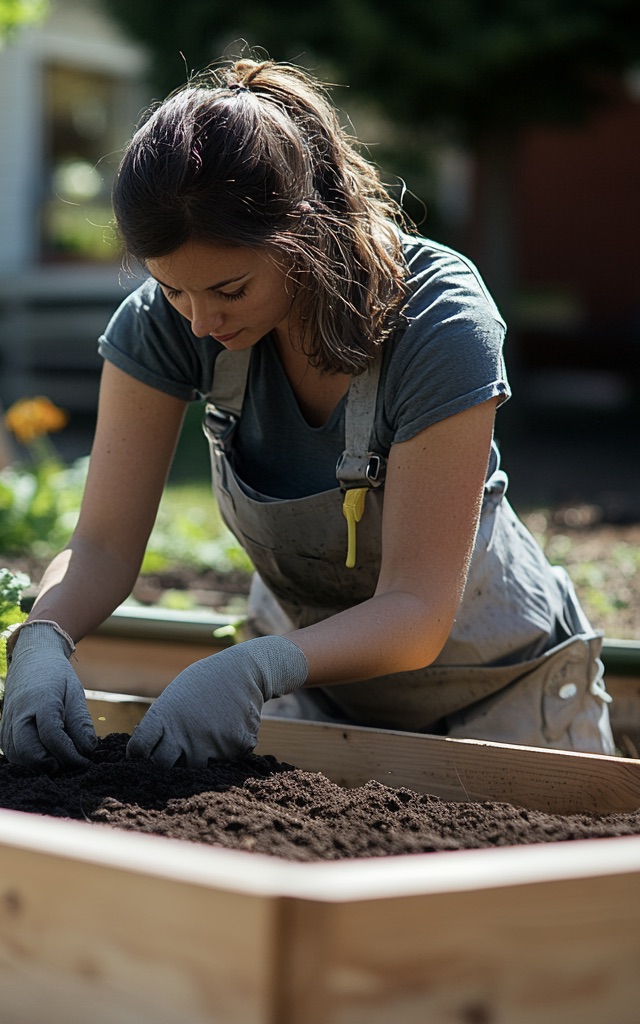This spring, I’m chaos companion planting in a new raised bed. I planted peas, sweet peas, and wildflower seeds in a bed that was ready, hügelkultur-style, with small branches, unfinished compost, and…no watering system except a small watering can and …no protection from rabbits and squirrels. Yes, the area is fenced, but the ground is somewhat uneven and there are gaps…like, under the gate. Even the squirrels don’t need to climb, they scamper easily right under the gate.
Now I am able to keep the soil surface watered, but still I occasionally see signs of digging. Today I go scavenging around and in sheds to see if I can find some way of protecting the bed. A small piece of chicken wire would do the trick, laid on top of the bed. A larger piece, I could make a semblance of a fence…
I’m gardening on no budget and with all the strength a 75-year old woman can muster…
So even if only a few plants survive I will count it as a success.
I’ve already done a “second planting”…mixing all the veggie and flower seeds left over from years of seed purchasing and scattering them over the surface. More chaos!
What if nothing much grows? Well, the volunteer potato plant will thrive…and the four pea plants seem to be surviving! …so that’s something! I will cover the bare spots with grass clippings. In the fall I will add more compost, maybe some bagged soil, purchase a NW wildflower seed mix and scatter that…
I’ll just keep making the soil better and trying again.
Meanwhile, I’ve written another book about a more deliberate, scientific method of companion planting and am offering it as a free ebook through this Sunday, May 11th. Help yourself to a free copy!







